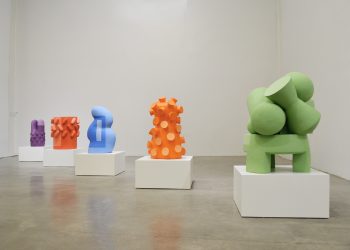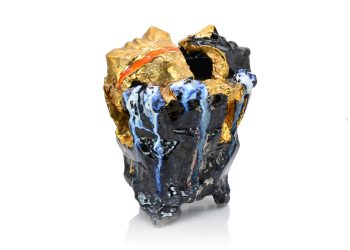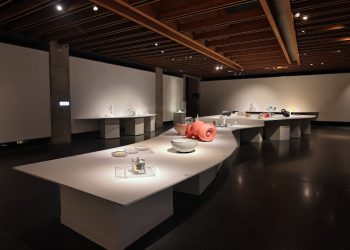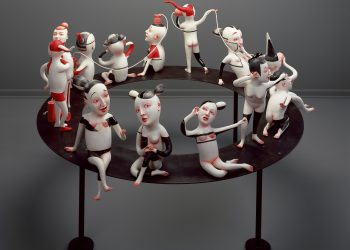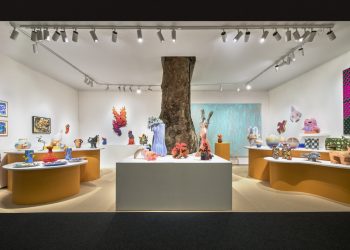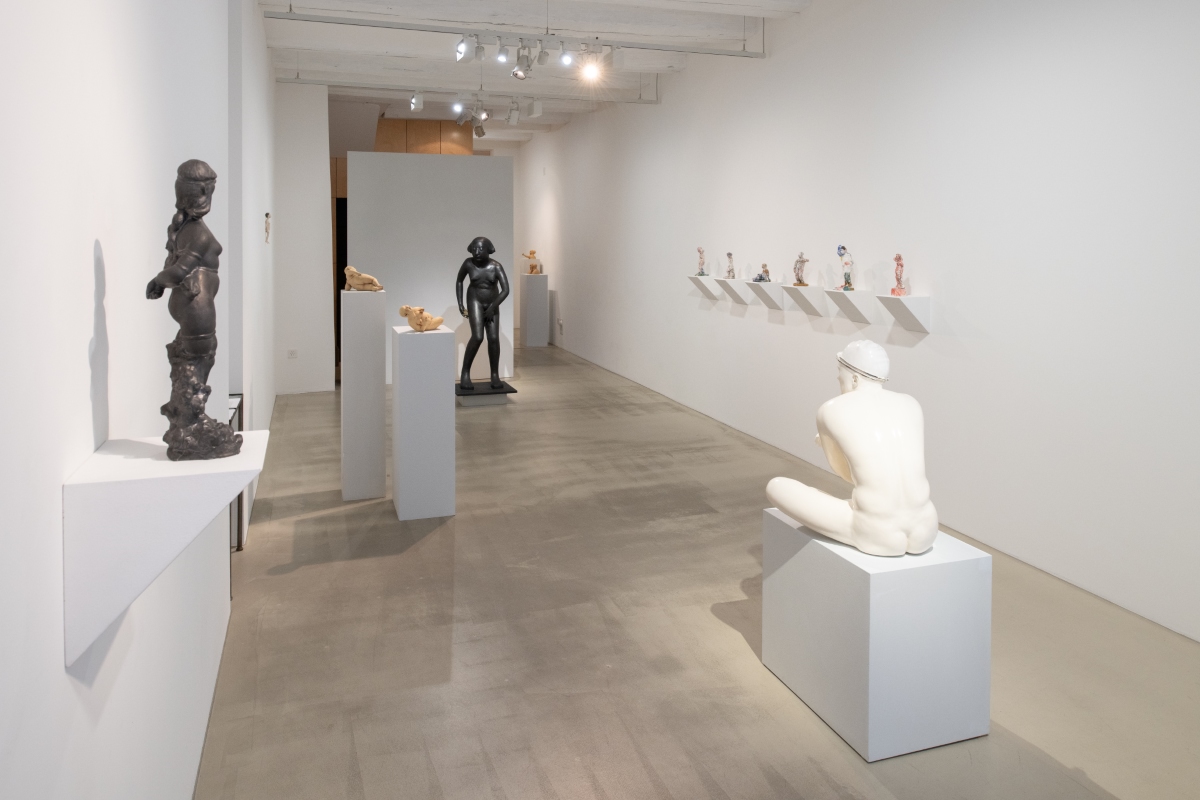
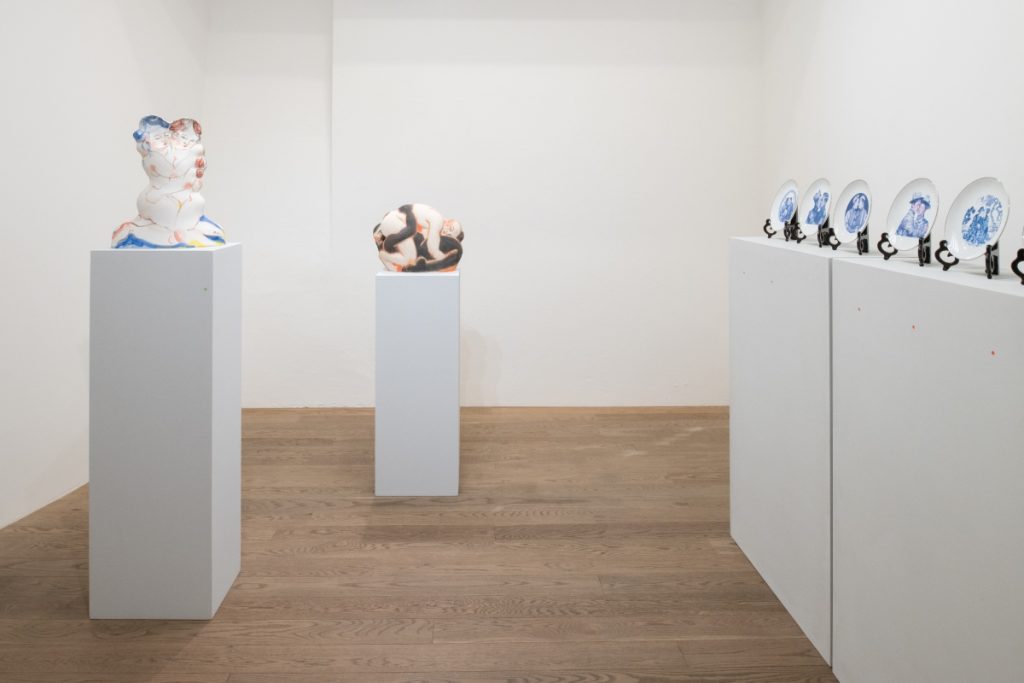
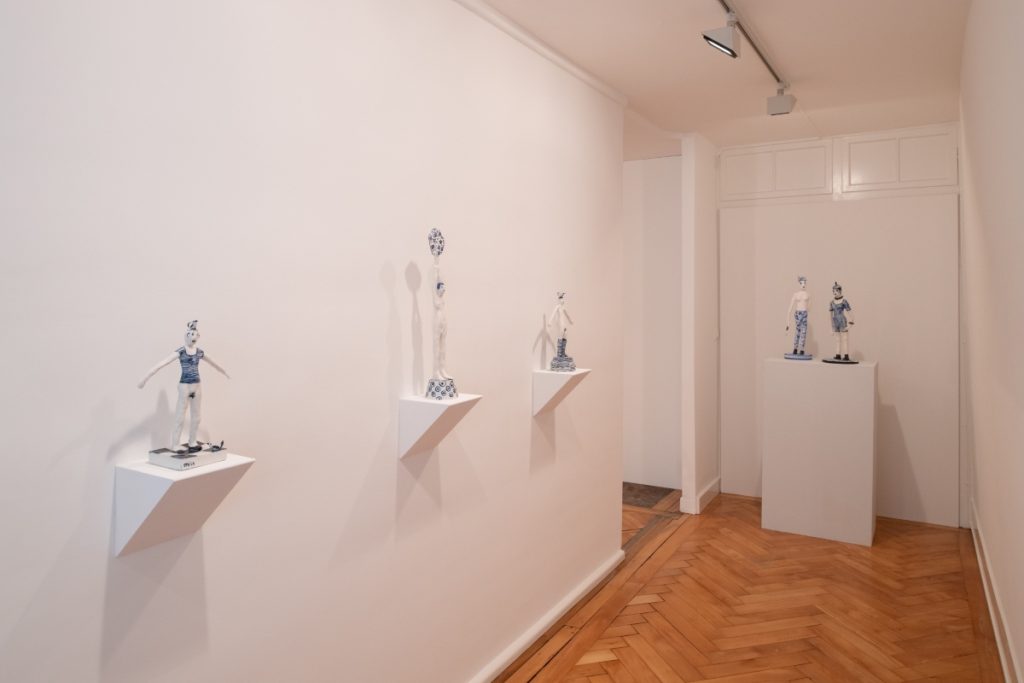
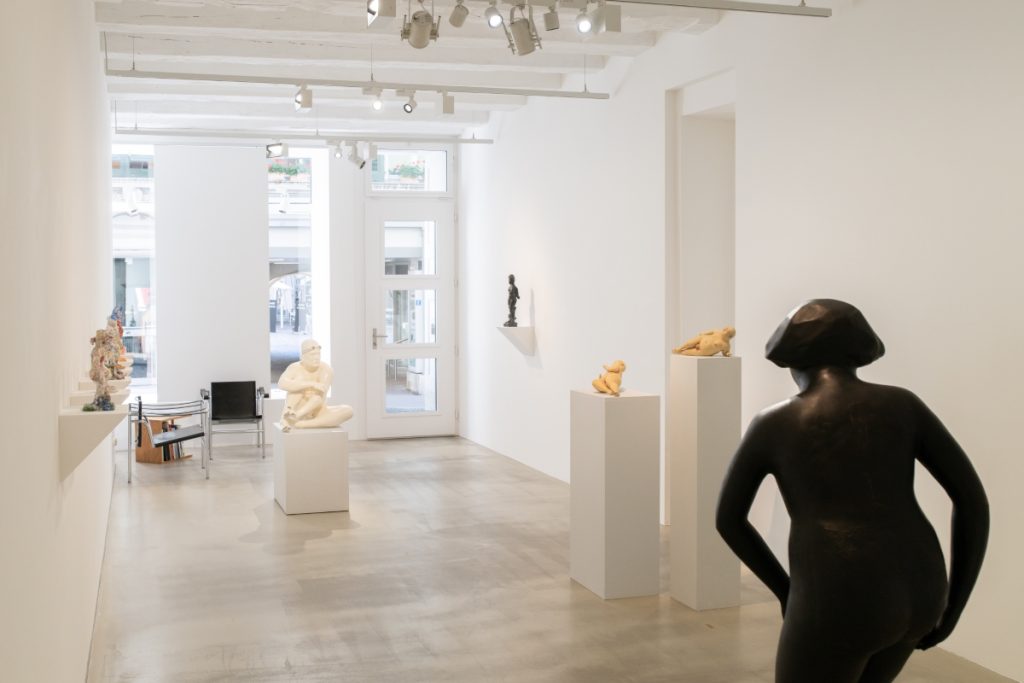
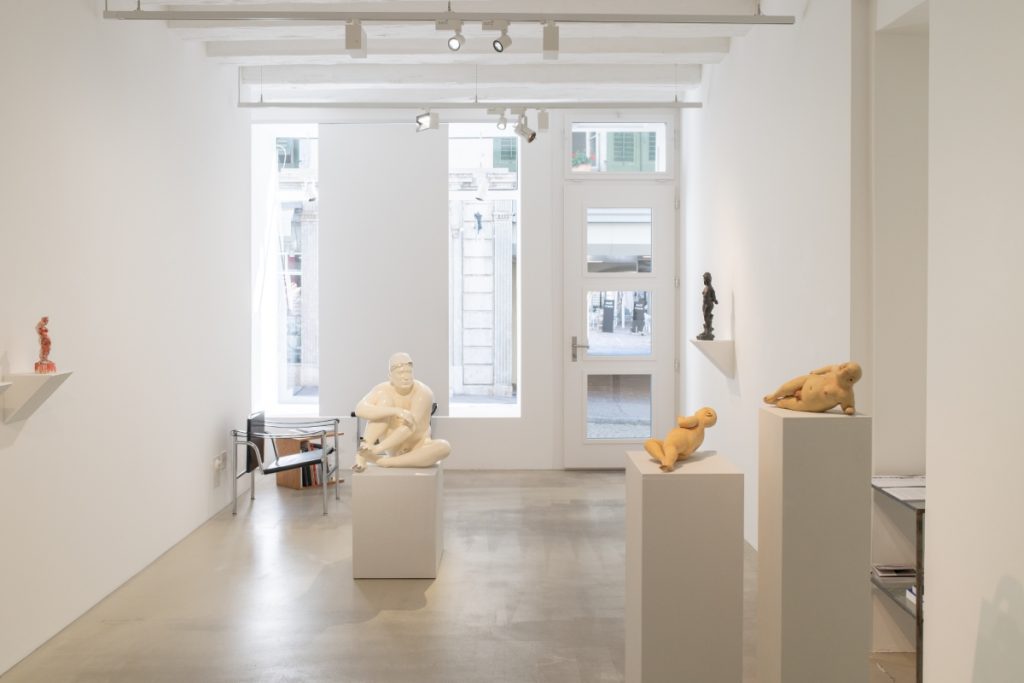
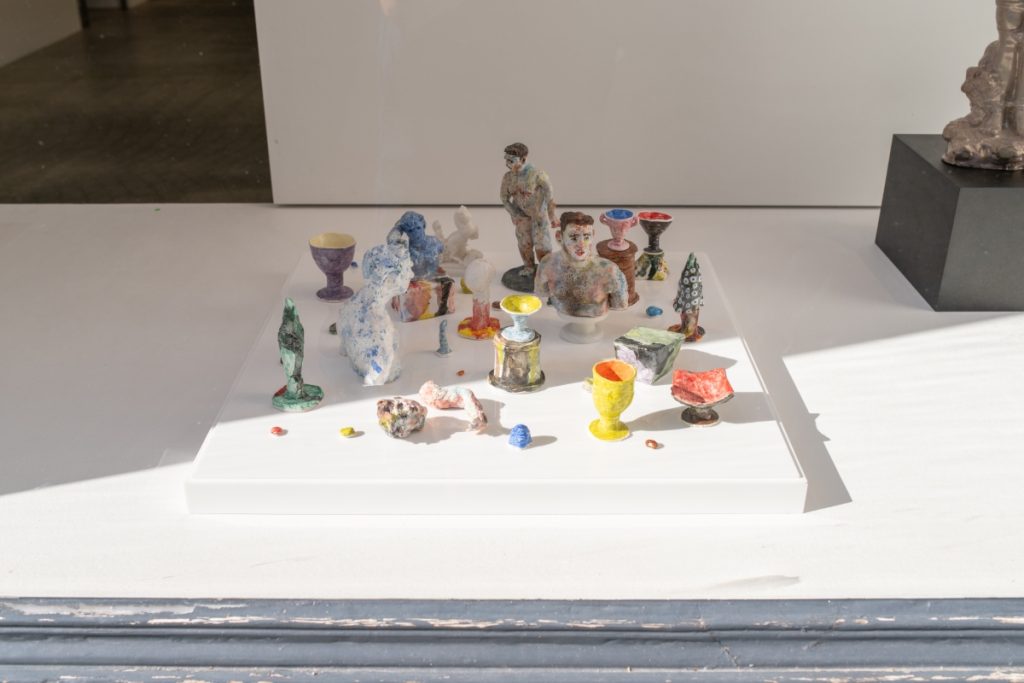
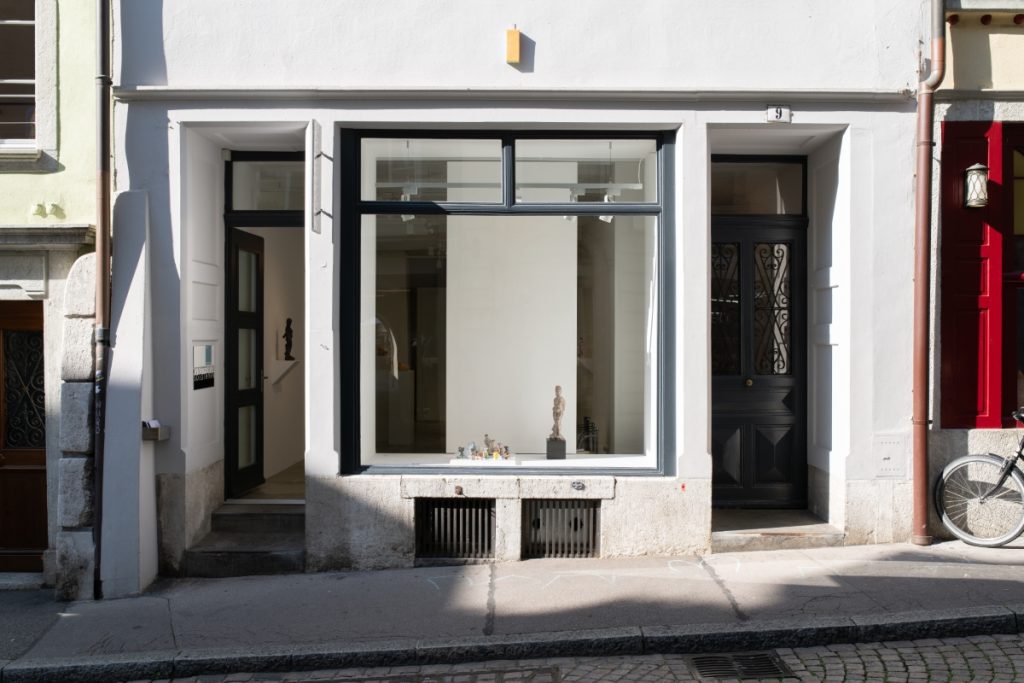
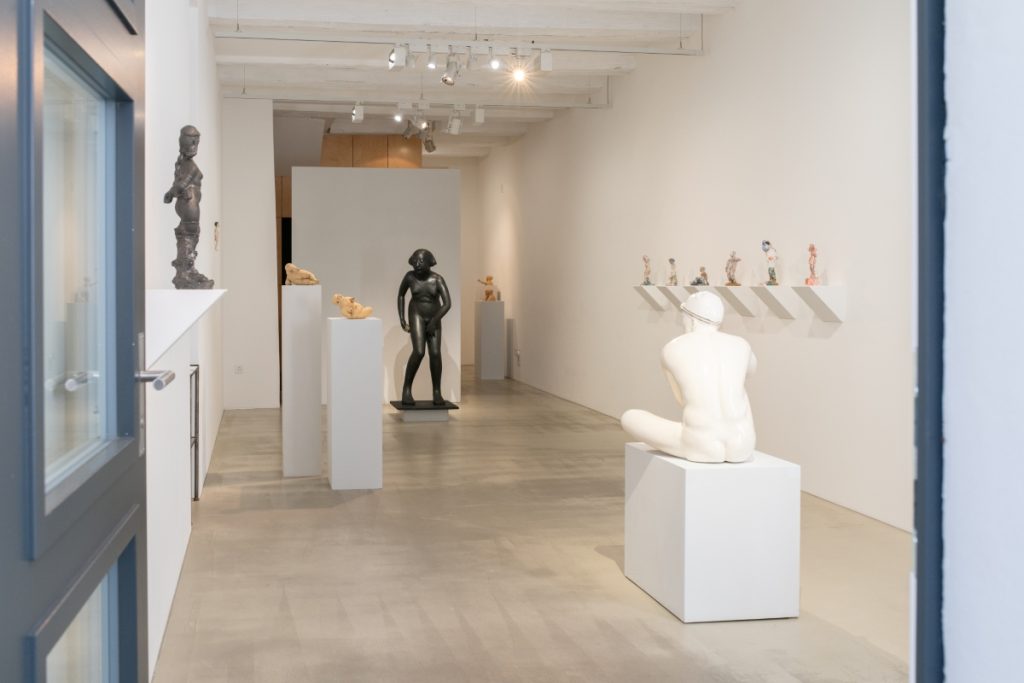
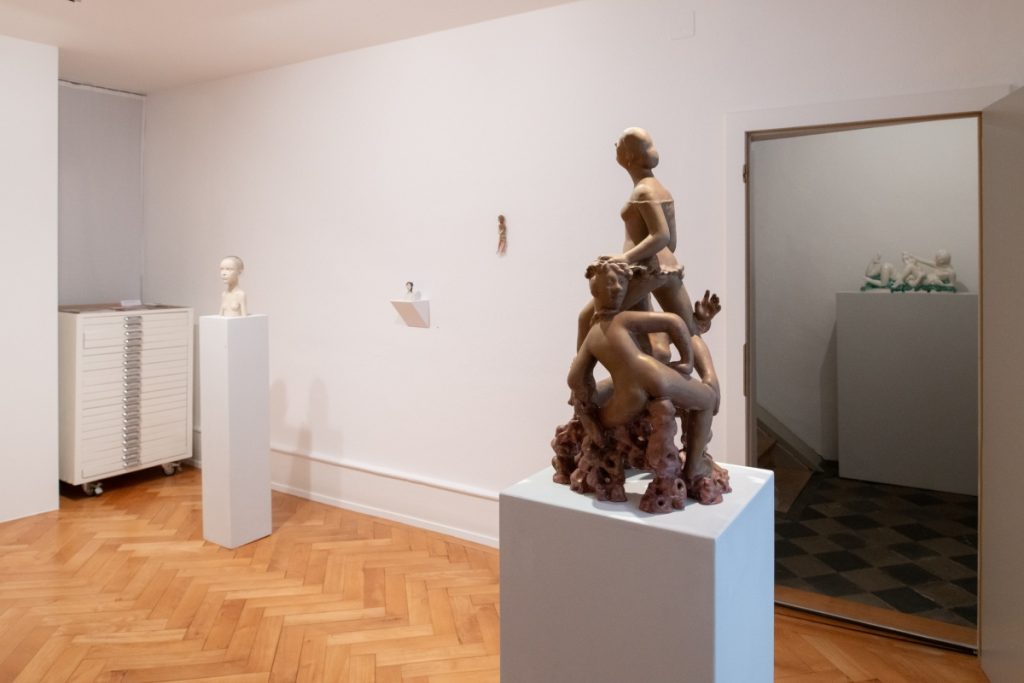
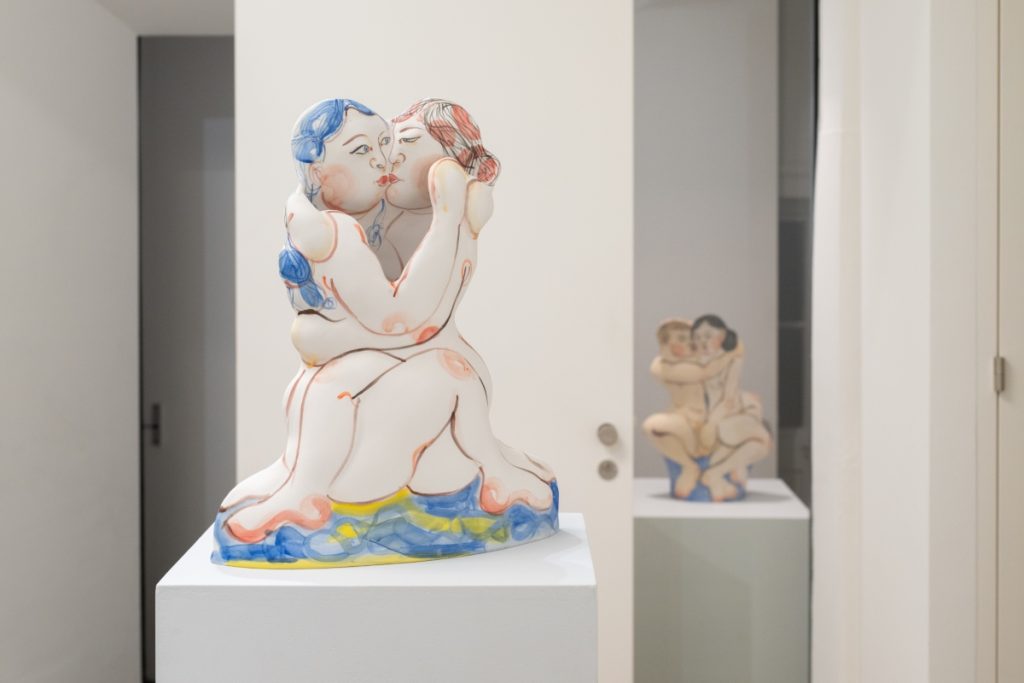
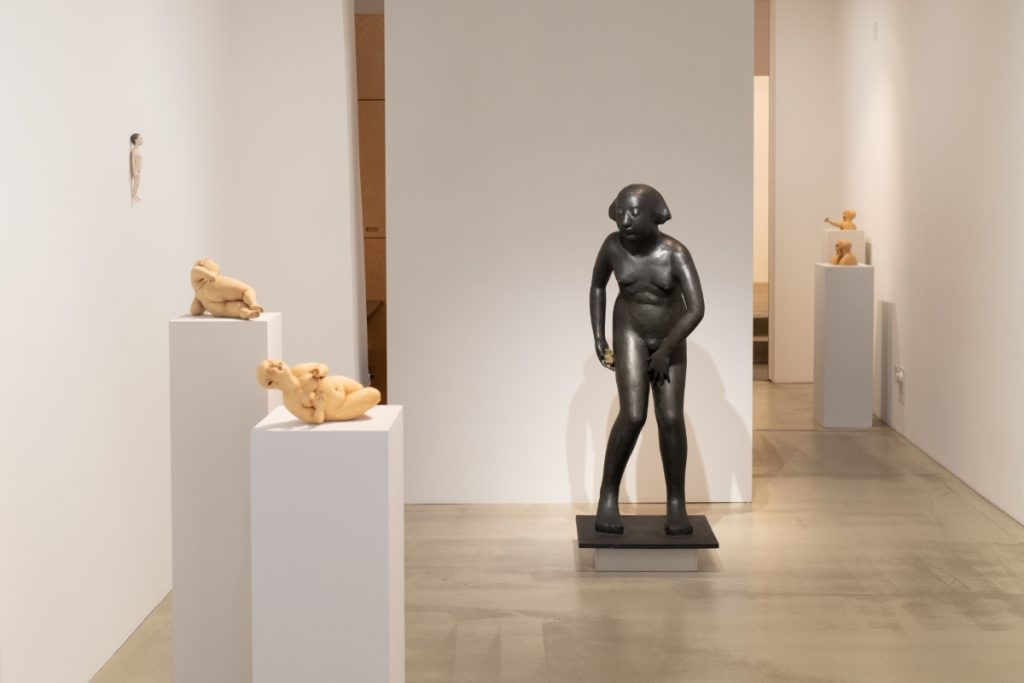
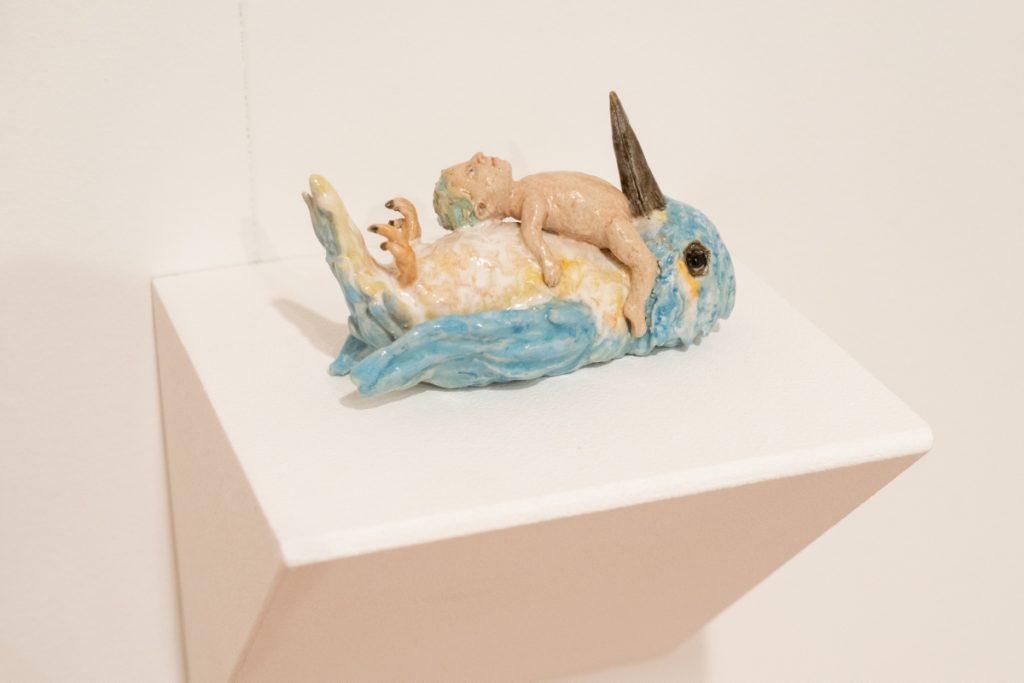
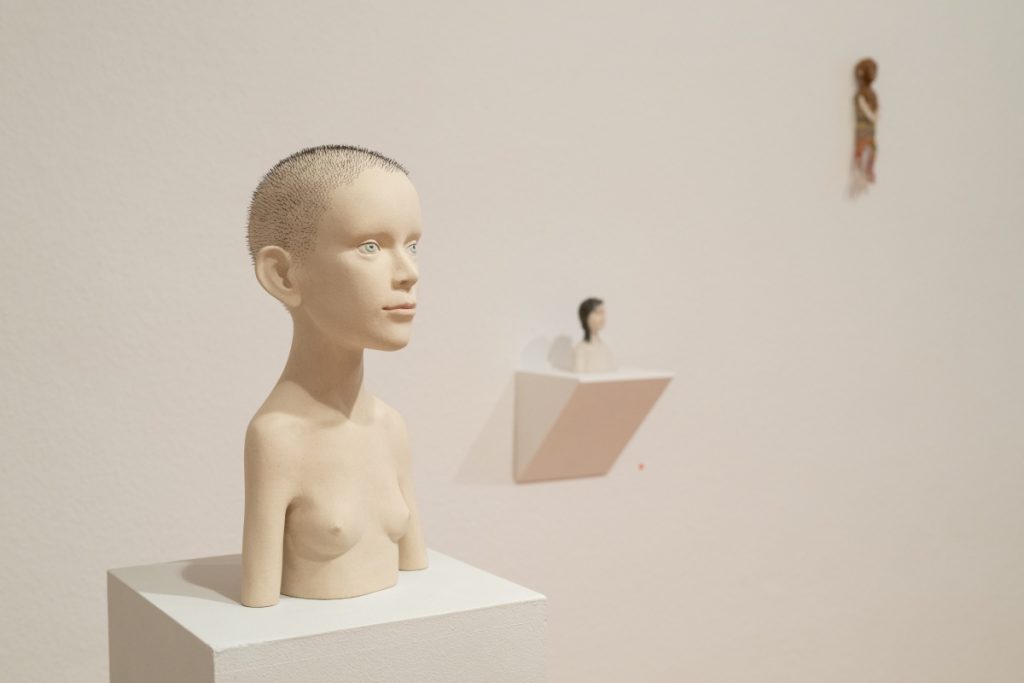
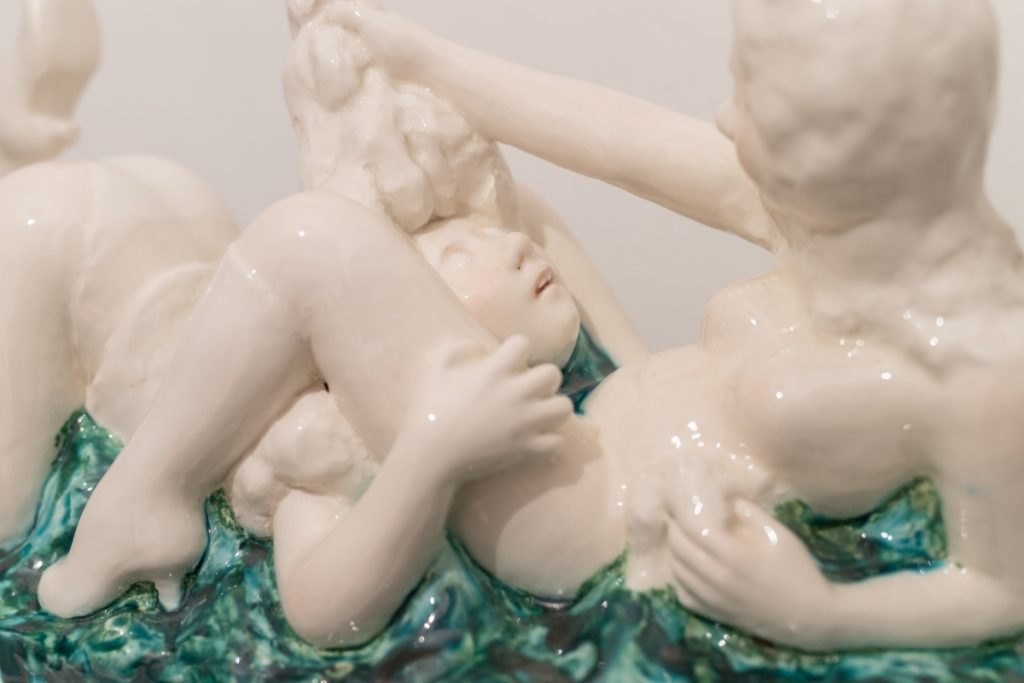
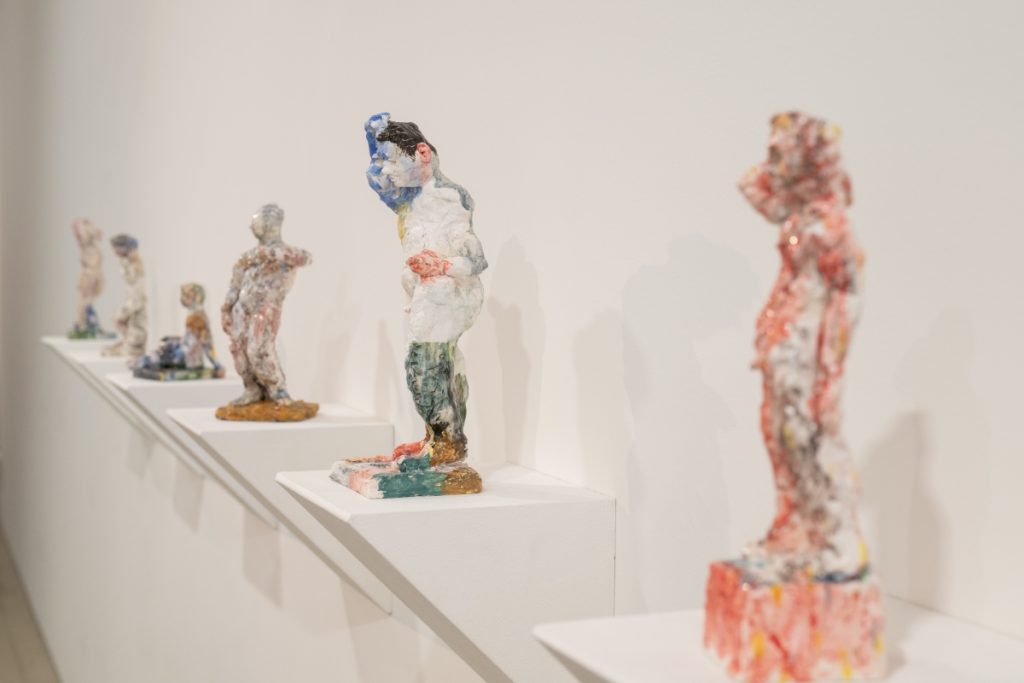
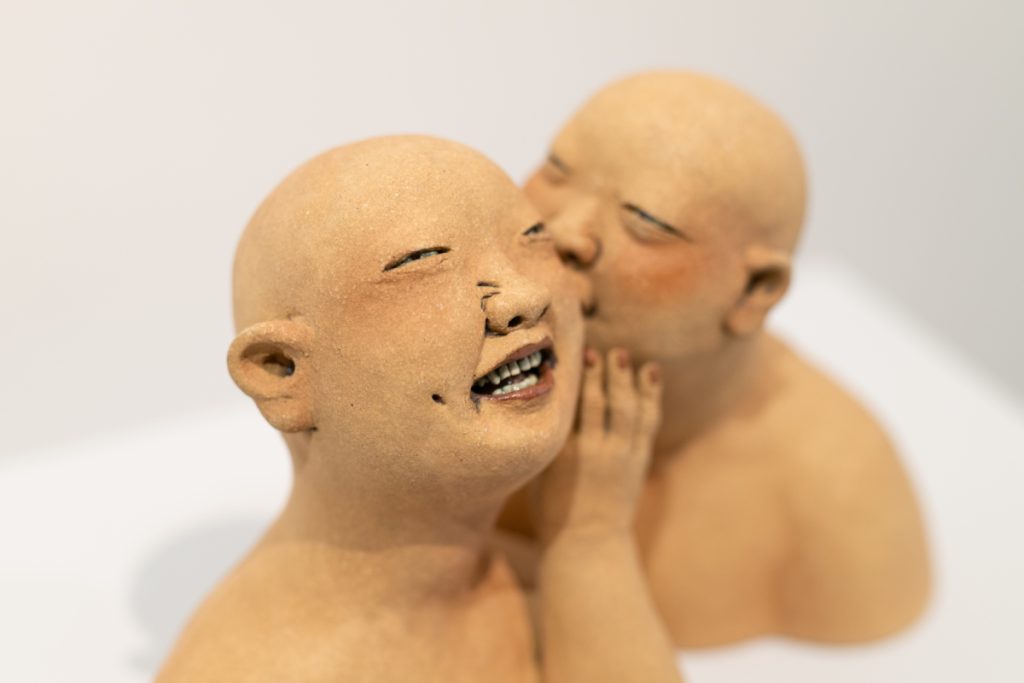
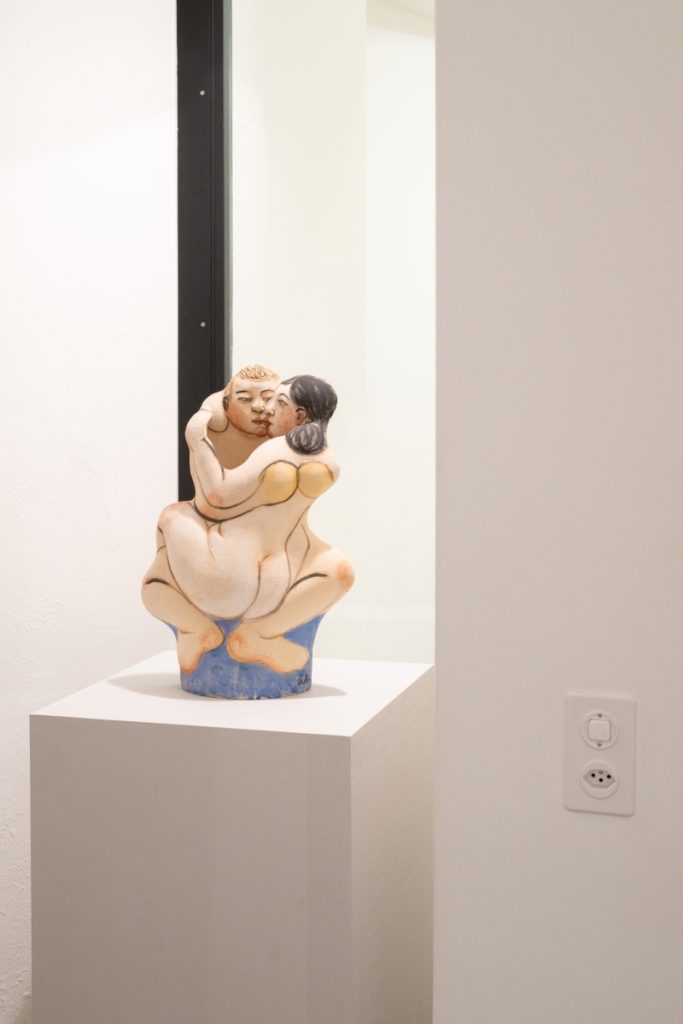
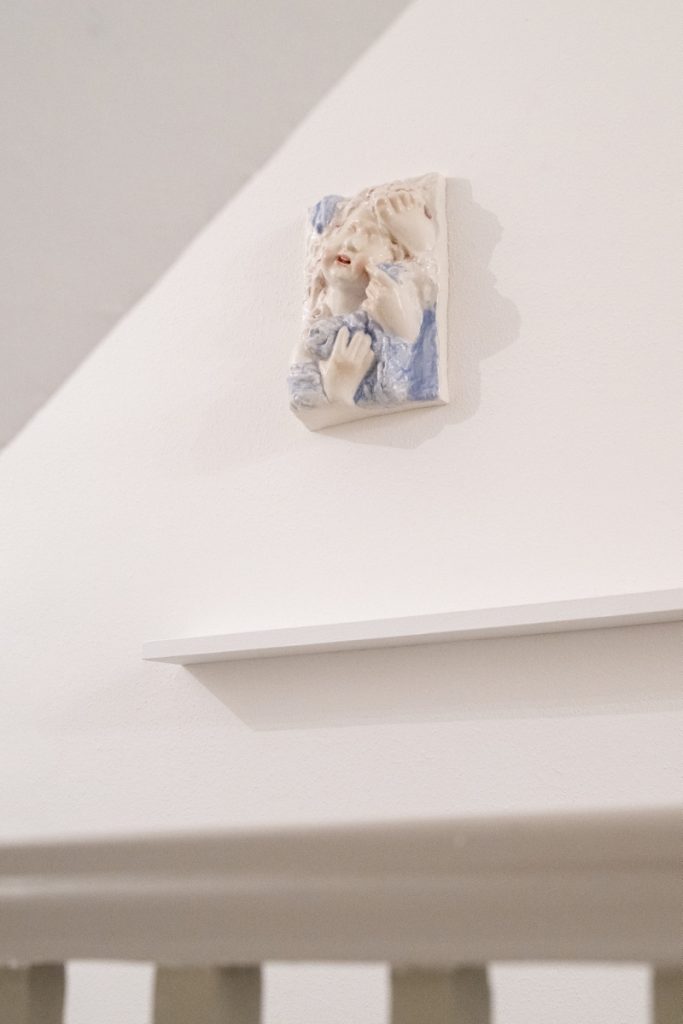
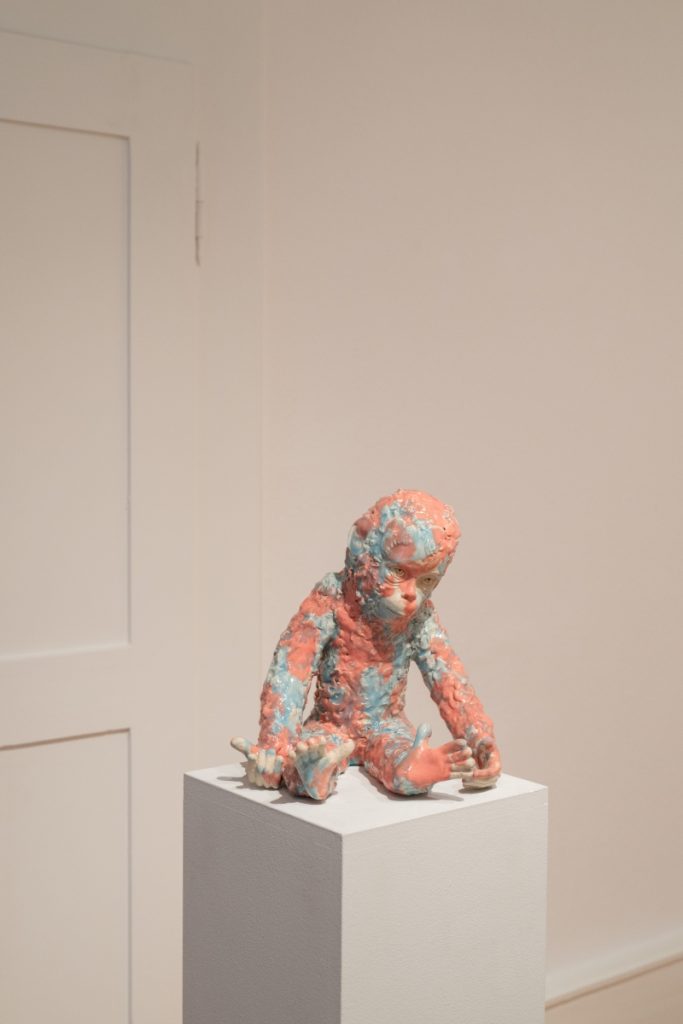
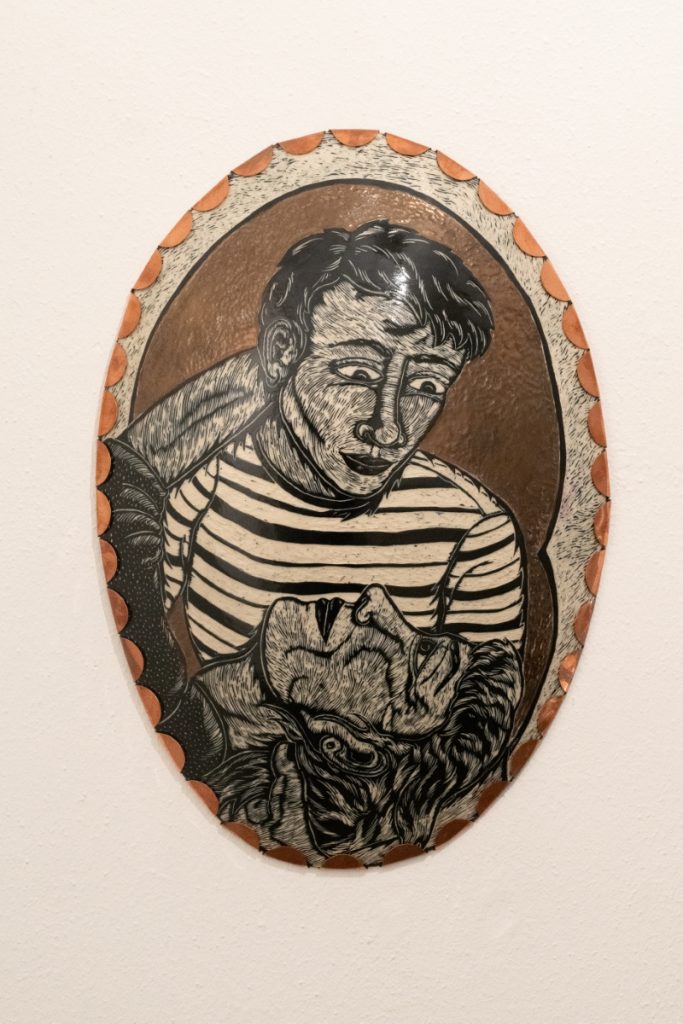
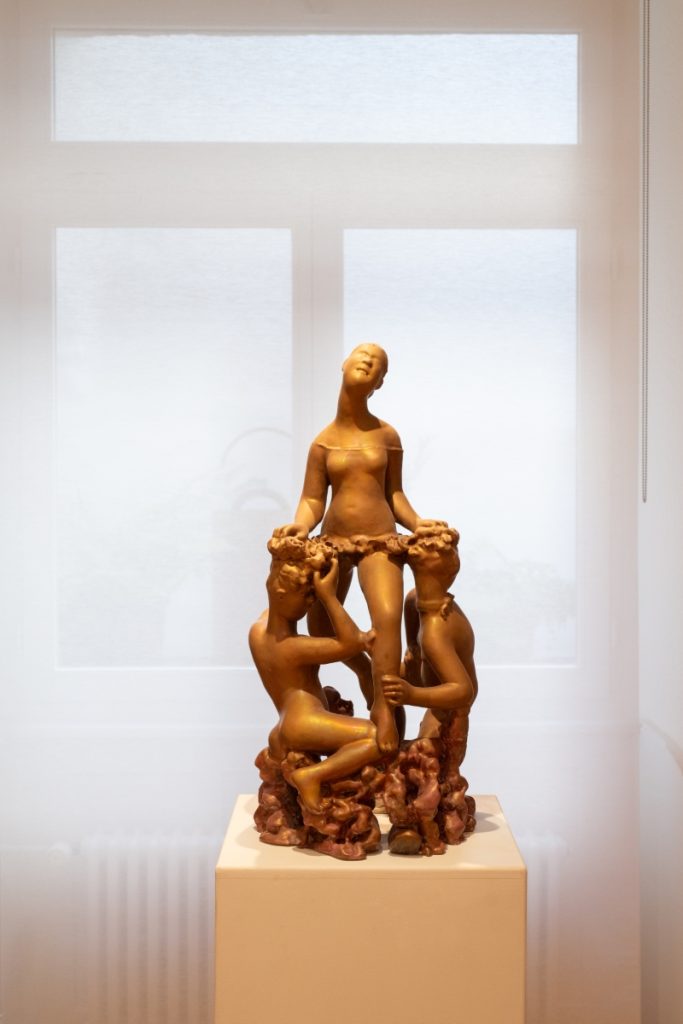
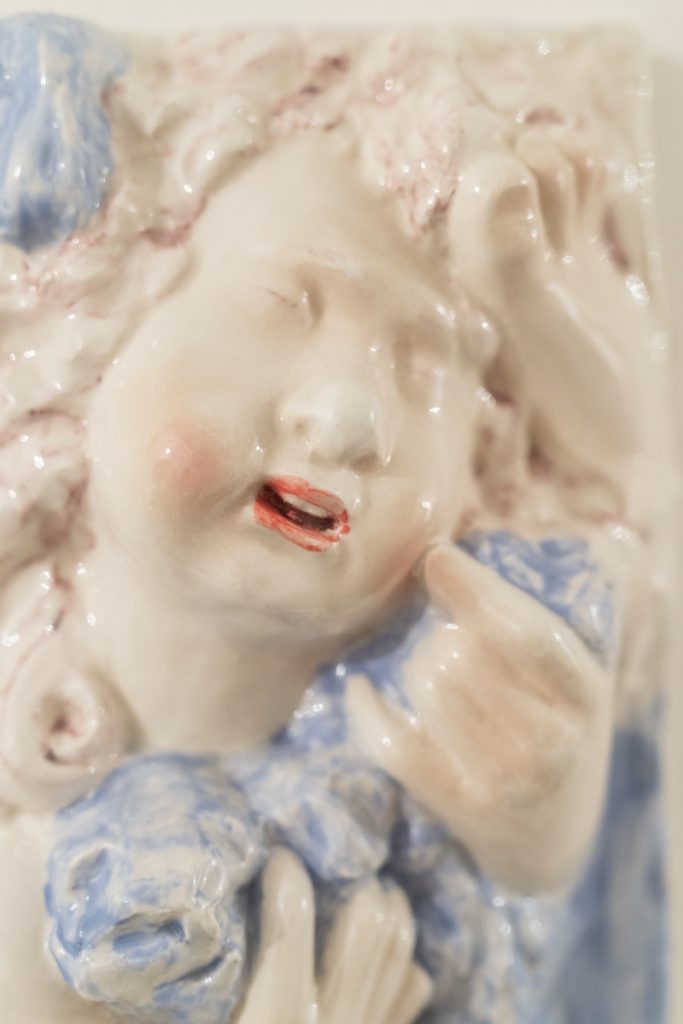
Islands of Desire is on view at Kunstforum Solothurn, Solothurn
August 19 – September 23, 2023
The exhibition ISLANDS OF DESIRE brings together works by twelve artists who have, in the course of their careers, addressed “queerness” and/or are currently still doing so.
The first working title I chose for the exhibition was “queer worlds,” but I found this too trendy in the end. My motivation in planning an exhibition on the subject of queerness went in a different direction altogether: I wanted to show that several ceramists that I represent in my gallery had addressed this subject in their works long before “queer art” became fashionable and was appropriated by the art market. The artists I would like to give special mention to are Gundi Dietz, Marja Hooft, Audrius Janušonis, and Akio Takamori.
ISLANDS OF DESIRE, the title I finally chose, is both more open and poetic. I liked and still like the fact that the English word DESIRE is ambiguous and has a number of varied definitions such as longing, desire, lust and wish.
The research I conducted to find other artists whose works seemed a good fit for the exhibition theme proved difficult. I was not surprised to find that most works I encountered focus on various aspects of gay eroticism. A possible explanation is that gay men, along with drag queens and transsexuals, were among the first activists to fight for their emancipation and rights, as well as at what came to be known as the Stonewall Uprising in 1969 on Christopher Street in New York, which has since been considered the birth of the modern homosexual movement. However, I was surprised to discover that “queer” is often used as a hashtag on Instagram and personal websites as a marketing strategy to boost sales of conventional ceramic works and questionable artistic merit. Nevertheless, I also discovered works that met my standards during my search. To my delight, a number of the artists behind these, such as Stephen Benwell, Adam Chau, and Kathy King, are now represented in the exhibition.
Kirsten Brünjes, Gundi Dietz, Marja Hooft, Esther Shimazu and Lena Takamori have all created a number of new works for the exhibition. Also, I wanted to commemorate Christyl Boger, who passed away far too soon, and I have included one of her pieces. Finally, not including de Caro Suerkemper’s figures, which move between erotic allusions and instances of grotesque queerness, was utterly out of the question.
The work of Stephen Benwell (1953, Australia) comprises ceramics, drawings, works on paper and paintings. Although he has had no formal training in ceramics, this medium forms the basis of his current artistic practice. His ceramic work results from a contemporary artist’s painterly and sculptural concerns. “The male nude, the allusion to the beautiful hero, is the recurring motif in Benwell’s work. The references to classical Greek sculpture and the ideals of male beauty are evident, but there is also an autobiographical element. The figure is Benwell himself, and his guiding principle is the homosexual point of view. “1 . Stephen Benwell’s figures stand solitary, reflective, and reserved, leaving us to meditate on ideals of beauty, human desire, and longing.
In her works, Christyl Boger (1959-2018, USA) combines representations of the contemporary figure with borrowings from ornate figurines of the Baroque and Rococo periods, creating figures that are as much about human behaviour as they are about the object of physical beauty. Because of their ceramic makeup, each figurine is at once skin and shell, reality and thought. “As an artist, I have always been interested in the strange balancing act performed by the human animal, in our ongoing struggle between impulse and control, personal and communal agenda and the desires of the animal body overlaid by a veneer of cultural constraint. “2 Christyl Boger’s figures stand as metaphors for a human subject shaped by social and cultural traditions, but also overcome by the pull of unnameable desires. “My figures…wear the signs of their nature and enculturation. The postures of classical repose at second glance reveal gestures frozen somewhere between the act of concealment and flagrant self-display.” 3
For this exhibition, Kirsten Brünjes (1964, Germany) has assembled a group of new and reworked figures. As we have come to expect from her, nothing is as it appears at first glance. Time and again, she puts us on false trails to open up multi-layered levels of meaning. Her interpretation of the exhibition theme is unexpected, the message coded and associative. Three principles are inherent in Kirsten Brünjes’ artistic work: courage for the imperfect, the play with ambivalences and the communication of inwardness. The eyes, meticulously naturalistic in their design, serve to establish contact and to communicate the inner and outer world. In these anti-heroes’ clear, open gaze, an astonishing sense of self-confidence is realized, and in this subjective encounter, the human dimension of the figures becomes perceptible.
Adam Chau (*1988, USA) creates blue and white porcelain objects using cobalt as a pigment. He draws parallels between the historical craft with a long history of globalization and the materials used in the electronics industry. The AI-generated images on the plates shown in the exhibition result from Adam Chau giving precise text instructions (prompts) to software in order to obtain specific types of images. I have been using it to imagine a world where homophobia does not exist and ask the question – what if ceramic artists in Ming Dynasty China were gay? What would our world look like if we celebrated queer identity? Would our pottery reflect this inclusive mindset? I tell the AI software to imagine pottery where “two men are in love. “- I enjoy this term because I would assume that the word love is subjective and a bit meaningless to a computer, yet I receive endearing images that convey a particular type of affection.
Over the years, Gundi Dietz (1943, Austria) has increasingly refined and reduced her works, manifesting both a supra-individual idea and an authorship that can be empathized with as deeply personal, to their basic substance. Whereas in the past she added attributes or apparent signs of danger and injury, strength and vitality, today she concentrates solely on expression. Aside from her now world-famous female figures, Gundi Dietz has always also portrayed the intersexual with a splendid matter-of-factness in her affecting and impressive figures. Form, proportions and details are equally coherent and original and demonstrate exceptional mastery in the handling of the material as well as in the realization of artistic intention. Gundi Dietz works against the merely pleasing. Beautiful and ugly, repulsive or attractive, are not clearly and easily separable for her. Every being is both, owning its dignity and its wounds.
Marja Hooft (1946, Netherlands) cofounded the artists’ group Cheops in 1985. This group aimed to create an alternative to Dutch ceramics, which was, for the most part, still very traditional. Experimentation and artistic cross-fertilization were at the forefront of the movement. The collective was, however, disbanded in 1996. Since then, her main focus has been on the human figure. They are light, narrative objects in which human and animal support each other and occasionally seem to merge. She has always also been interested in the representation of a playfully cryptic queer eroticism, which she presents to us in the style of classical Delft porcelain and her own distinctive kind of naïve representation.
Audrius Janušonis (1968, Lithuania) is a sensitive observer and chronicler of human behavior. In 1994, he completed his studies in sculpture at the Vilnius Academy of Art. Since then, he has devoted his artistic work to the human figure. The narrative aspect, the subtle, sometimes sly, dark humor and the refined symbolism of his figures, shaped with great virtuosity, altogether evoke manifold associations. It is often difficult to distinguish where reality ends and the dreamlike begins. Outward appearances take on meaning as symbols for inner processes. At the beginning of the noughties, Audrius Janušonis dealt in various versions of his work with travesty and gender roles or the ambiguous assignment of gender by depicting Frank Zappa – whose band was called The Mothers and whose music Janušonis loved as a young art student – in short or long skirts.
In her work, Kathy King (1968, USA) focuses on the representation of narratives from a feminist point of view. The use of sgraffito points back to her training as a graphic designer. The sgraffito technique involves placing two layers of paint on top of each other and then scratching away parts of the top layer of paint before it is completely dry. Personal experiences influence Kathy King’s pictorial ideas; thus, she often incorporates herself as a figure in her work. Frequently, her works include a written message that adds to the impact of the images. Kathy King is interested in how popular culture in print and digital mass media not only reflects but also shapes women’s lives, and she critically examines this influence. She uses humor, irony and sarcasm to address issues of gender and sexuality in her work, challenging traditional sexual norms.
Meticulously formed and naturalistic to the smallest detail, the women and men formed by Esther Shimazu (1957, USA) stand out with their nakedness and corpulence as new interpretations of the nude. The artist’s Japanese heritage unmistakably shapes them. Always part self-portrait, sincere, sensuous, unashamed and voluptuous, with rounded bellies, dimples, bald heads and diabolically cheerful laughter, the figures radiate – with a mix of sophistication and innocence – a seemingly irrepressible joie de vivre while making direct contact with their vis-à-vis. Much of the subtle refinement in her work, shaped by historical Asian sculptures, lies in the careful positioning of the small hands and feet and their contrast to the voluminous bodies and heads. The hands curl gracefully and are intentionally reminiscent of the gesticulation of Hindu figures, Polynesian dancers and the Hawaiian hula, and reflect Asian symbolism and a multicultural humanity.
Caro Suerkemper’s (1964, Germany) subject is the human body in its ecstatic contortion and emotional permeation. She takes up concepts from 17th and 18th-century porcelain art and places the modeled or painted female figures in exaggeratedly provocative and lustful scenarios. The range of motifs extends from obscene submission to attempts at latent aggressive self-assertion. The artist is not concerned with superficial effects but with the question of social and cultural identity and imprinting. Whether innocent or disreputable, reticent or shrill – ultimately, all the figures remain bound up in a web of rules and conventions; even in the most extravagant self-portrayal, there is heteronomous role-playing. The group of figures Progress is reminiscent of a Baroque sculpture for the viewer’s erotic edification. If you look closely, it turns out to be a pointed representation of dominance and submission. With her figures, Caro Suerkemper formulates her interest in the rules we play, systems of order, and questions regarding power and powerlessness, desire, and control.
The envelope-vessels by Akio Takamori (1950 – 2017, Japan/USA) are a further development of his idea, which caused a great furor in this art branch at the beginning of the 1980s, not only because he further developed the millennia-old form of the vessel, but also because he transformed the vessel’s own empty space, originally intended to hold food, into an emotional space through the two lovers facing each other. His lovers show both heterosexual and homosexual couples making love. Akio Takamori has no interest in any attributes. Alone through their gaze and posture, he gives us insights into the respective nature of the relationship. Although the influence of Kitagawa Utamaro (1753-1806) on envelope vessels is undisputed, in Akio Takamori’s work, the theme is expanded, not only in terms of dimensionality but also in terms of the universality of the power of Eros, for example by setting the individual actors apart in terms of color in order to immediately bring the suggested ethnic characteristics – like all other differences – back together again in the act of love. With his envelope-vessels, Akio Takamori has given impressive expression to the existential significance of Eros in his own balance between powerful expressiveness and sensitive humanity.
Lena Takamori (1990, USA/UK) follows her artistic path regardless of current trends dominating the art market. Her works are convincing because of their independence and the high artistic quality of sculpture and painting. She finds the inspiration for her works in everyday life – to see what already seems familiar in a new way. With Stepping Out of Dress, Lena Takamori has captured an intimate, mostly private and sometimes erotic moment of undressing that piques our curiosity and engenders numerous questions.
Text by Hanspeter Dähler
Contact
info@kunstforum.cc
Kunstforum Solothurn
Schaalgasse 9
CH-4500 Solothurn
Switzerland
Photos by Simon von Gunten




